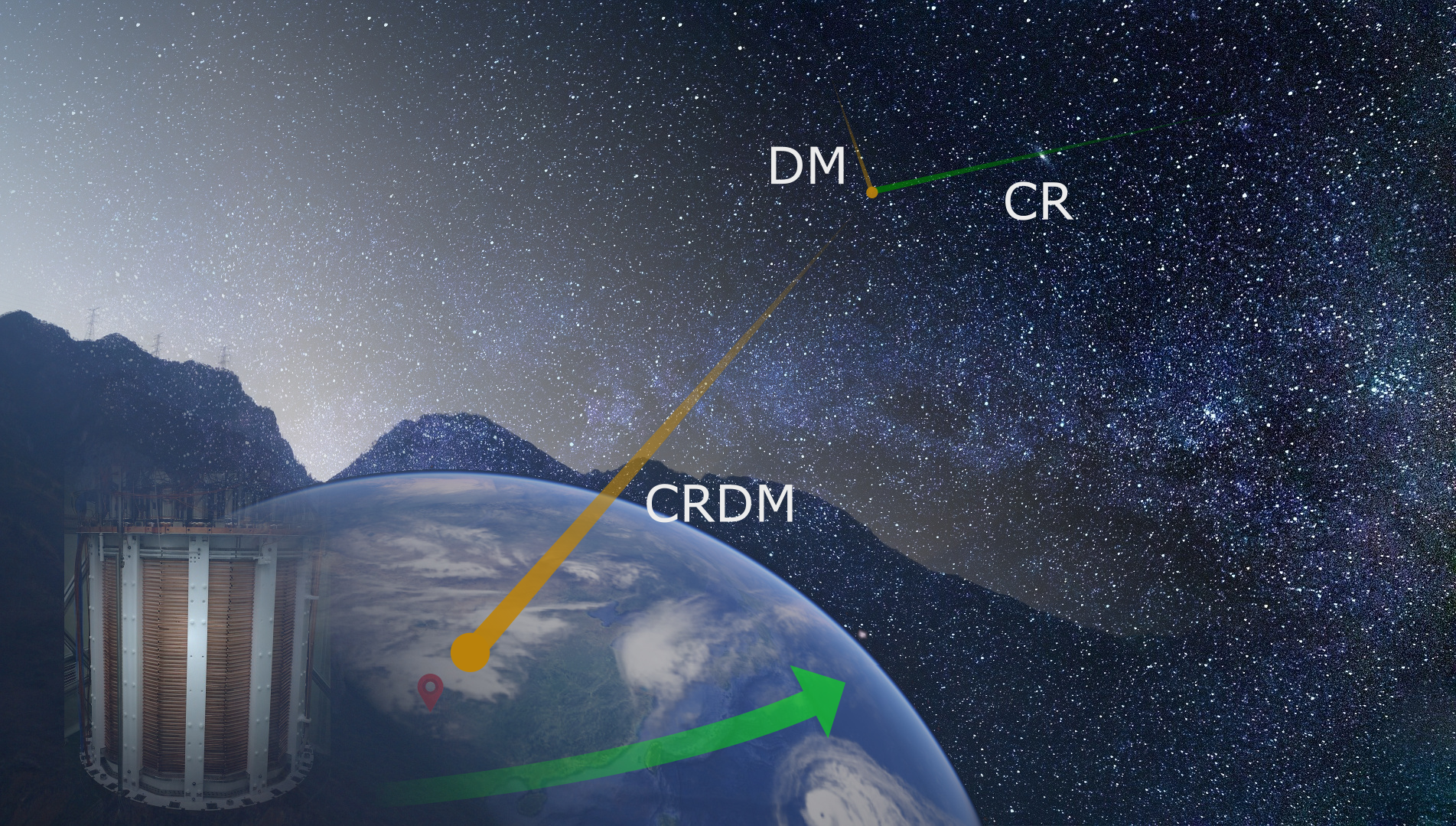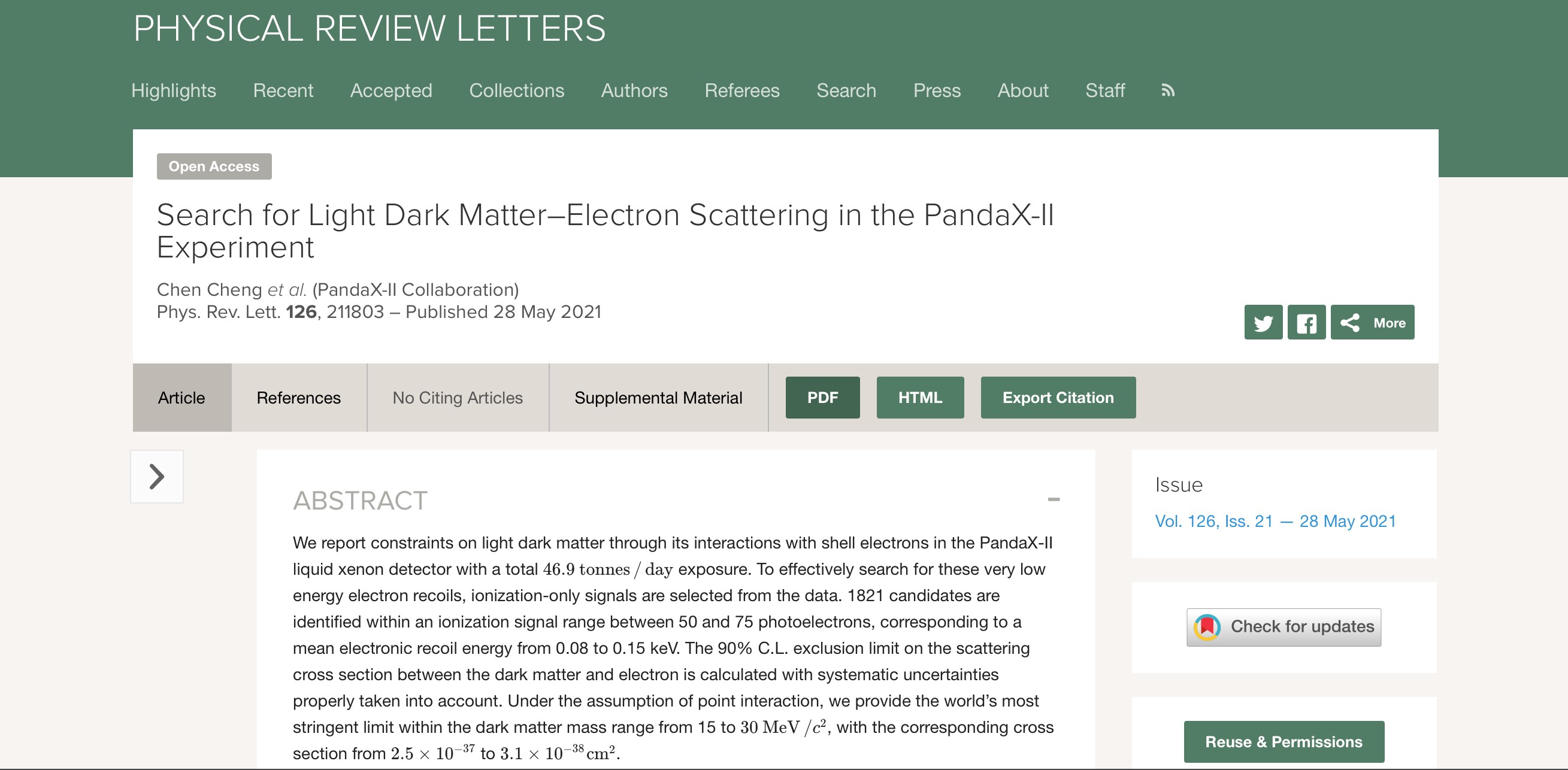The PandaX Collaboration has been awarded an NSFC-funded international collaborative research grant for a project titled “Development of Key Techniques for Solar Neutrino Measurements with a Deep Underground Xenon Detector.” This project aims to advance neutrino physics by utilizing the facilities at the China Jinping Underground Laboratory (CJPL), the world’s deepest underground laboratory.
You are here
News
PandaX-4T is not just a dark matter detector, as you may be more familiar with. For such a large and exquisite detector, we can explore multiple physics topics. Neutrino physics is one such important direction.
Background neutrinos can elastically scatter with target nucleus (coherently elastic neutrino-nucleus scattering or CEvNS), producing nuclear recoil signals in a dark matter detector that can mimic dark matter signals. This intrinsic background is the so-called “neutrino floor”, which will ultimately limit the sensitivity of dark matter direct detection. On the other hand, it also provides very interesting physics opportunities to study neutrino interactions.
With the extra energy gained from the cosmic rays, sub-GeV dark matter particles can produce visible recoil signals in the detector. We present a new result searching for the cosmic ray boosted dark matter (CRDM) with the PandaX-II full data. This work is motivated by the theoretical paper (PRL. 126 091804), which first pointed out that a sidereal diurnal modulation in signal rate and energy spectrum due to the Earth shielding is expected for low mass CRDM.

On December 24, 2021, the first dark matter search result from PandaX-4T, a liquid xenon detection experiment, was published in Physical Review Letters as the "Editor's Suggestion" [1]. The American Physical Society 《Physics》 reported this PandaX-4T latest result together with another result from the Axion Dark Matter Experiment with a title of "Tightening the Net on Two Kinds of Dark Matter"

A new result on searching of light dark matter (DM) with PandaX-II experimental data was published online in Physical Review Letters on May 28, 2021 with a title of "Search for Light Dark Matter–Electron Scattering in the PandaX-II Experiment "[1]. This is the 6th PRL paper published with PandaX-II data.

Latest progress report and future plan
Jan 17, 2021The PandaX-II experiment is completed and the PandaX-4T experiment is under installation. The future PandaX program will focus on the following two main directions:
- Develop PandaX-4T into a multi-purpose liquid xenon experiment, to push further the dark matter search and other physics topics;
- Develop and operate a 100-kg high pressure gas TPC (HpgTPC), PandaX-III, as a pathfinder for a tracking calorimeter to search for $0\nu\beta\beta$ in ${}^{136}Xe$.

